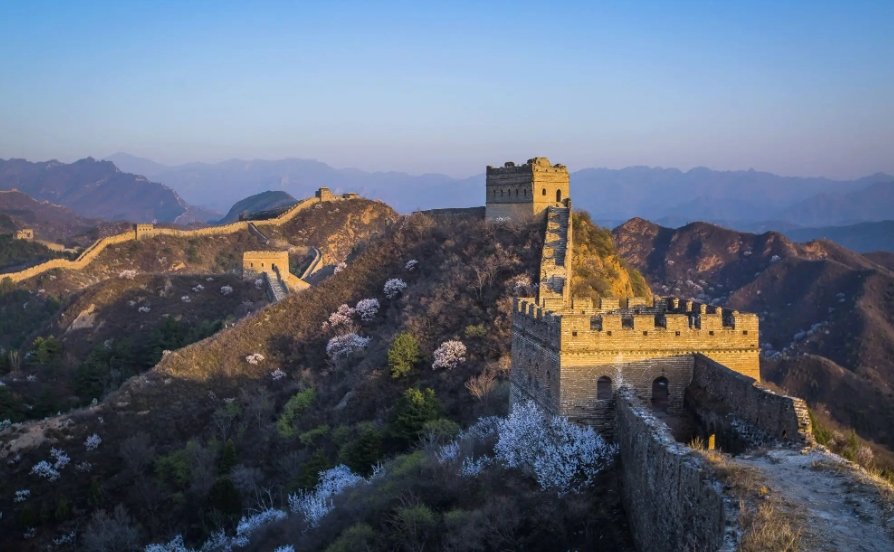
The Great Wall of China: A Fortress, a Border, and a Trade Route
The Great Wall of China, a UNESCO World Heritage site and one of the most iconic structures on Earth, snakes across mountains and deserts for thousands of miles. But why was such a monumental structure ever built? The answer, like the wall itself, is long and complex. Over its history, the Great Wall served three distinct, yet interconnected, purposes: defense against invaders, division between civilizations, and protection of the Silk Road.
1. A Bulwark Against Invasion:
The most well-known reason for the Great Wall's construction is its role as a defensive barrier. From the 7th century BC onwards, various Chinese states and dynasties faced threats from nomadic tribes to the north. These tribes, such as the Xiongnu, Mongols, and Manchus, often raided Chinese settlements for resources and territory.
The first sections of the wall were built during this time, not as a continuous structure, but as individual walls by different kingdoms to protect their borders. These early walls were primarily constructed from earth and wood, utilizing the local terrain to their advantage.
However, it was Emperor Qin Shi Huang, the first emperor of a unified China, who initiated the ambitious project of connecting and strengthening these existing walls in the 3rd century BC. He envisioned a formidable barrier that would deter invasions and solidify his empire. This marked the beginning of the Great Wall's evolution into the monumental structure we know today.
Over the centuries, subsequent dynasties, particularly the Han, Sui, and Ming, continued to add to and reinforce the Great Wall. They improved construction techniques, utilizing bricks, stone, and more durable materials. Watchtowers, garrisons, and signal towers were strategically placed along its length, allowing for effective communication and deployment of troops.
2. A Divider of Civilizations:
Beyond its physical presence, the Great Wall also served as a symbolic demarcation line between different cultural and political entities. It represented the divide between the settled agricultural societies of China to the south and the nomadic pastoralist cultures to the north.
This division had a profound impact on the development of Chinese identity. The wall came to symbolize Chinese civilization's perception of itself as a bastion of order and sophistication against what they considered "barbarian" forces.
This psychological barrier fostered a sense of unity and national identity within China. It solidified the emperor's power and authority, projecting an image of strength and impenetrability to both his own people and potential enemies.
3. A Guardian of Trade:
While the Great Wall is primarily associated with defense, it also played a crucial role in facilitating trade, especially along the Silk Road. This network of trade routes connecting East and West brought immense wealth and cultural exchange to China.
The Great Wall provided security for caravans traveling through dangerous territories. The presence of military outposts and patrols along the route helped deter bandits and raiders, ensuring the safe passage of goods and merchants.
Furthermore, the wall regulated the flow of people and goods entering and exiting China, allowing the government to collect taxes and control trade. This revenue proved vital for the economic prosperity of successive dynasties.
The Great Wall: A Legacy in Stone
The Great Wall of China is not just a wall, but a testament to human ambition, ingenuity, and the complex interplay of factors that shape civilizations. It served as a defensive bulwark against invaders, a symbolic divider of cultures, and a protector of trade routes. While its effectiveness as a purely defensive structure is debatable, its impact on Chinese history, culture, and identity is undeniable.
Questions and Answers:
Q1: When was the Great Wall built?
A1: The construction of the Great Wall was not a single event but spanned centuries, beginning in the 7th century BC and continuing into the 17th century AD.
Q2: How long is the Great Wall of China?
A2: The total length of the Great Wall, including all of its branches and sections, is estimated to be over 13,000 miles (21,000 kilometers).
Q3: What materials were used to build the Great Wall?
A3: The materials used varied depending on the era and location. Early sections utilized earth and wood, while later dynasties incorporated brick, stone, and more durable materials.